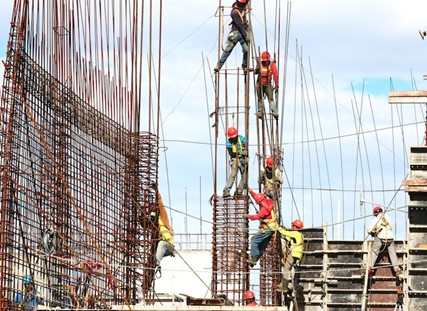In 2021, one in five workplace fatalities occurred within the construction industry, according to the U.S. Bureau of Labor Statistics.
From working at towering heights to operating heavy machinery, construction workers are constantly exposed to dangerous conditions and hazards, leading to a significant number of workplace injuries, disabilities, and deaths every year.
The Occupational Safety and Health Administration (OSHA) has identified four major hazards to be the main cause of injuries and fatalities in the construction sector. Known as the Fatal Four, these hazards include falls, being struck by objects, electrocutions, and being caught-in/between.
To combat this, strict adherence to safety protocols is crucial in order to ensure a safer work environment and protect workers from inherent dangers.
Erik Brogan of Minnesota provides tips and guidelines for maintaining a safe construction site, focusing on the importance of championing worker safety and well-being.
Essential Safety Measures for Construction Sites
Ensure Workers Wear Appropriate PPE
Personal Protective Equipment (PPE) refers to clothing, gear, or equipment designed to safeguard employees from injuries in the workplace. Employers are required to provide their workers with protective gear that complies with standards and regulations.
The different types of personal protective equipment for construction are as follows:
Head Protection
• Hard hats
• Helmets
Eye and Face Protection
• Safety glasses
• Goggles
• Face Shields
• Welding Helmets
Hand and Arm Protection
• Gloves
• Arm Guards
• Gauntlets
Respiratory Protection
• Masks
• Respirators
• Air-Purifying Respirators
Foot and Leg Protection
• Safety Shoes
• Boots
• Leggings
Body Protection
• Overalls
• Vests
• Aprons
• Full Body Suits
Conduct Health and Safety Training
Construction employees who work in medium to high-risk environments are required to undergo health and safety training. Employers are responsible for hiring professionals to conduct this training for all employees.
Workers should be fully aware of every risk associated with their job and be taught how to protect themselves and mitigate these risks. This is especially crucial when working at heights, with heavy machinery, or in confined spaces. Proper first aid training is also essential.

Display Safety Signs
Workplace safety signs are visual reminders for workers and visitors of the risks that are present within the environment, including dangers, warnings, and potential hazards.
Putting up signs, posters, and labels is a simple and cost-effective way to reduce injuries in the workplace, as they can indicate dangers and highlight hazardous areas to raise health and safety awareness among employees and visitors.
Encourage a Clean and Organized Workplace
It is important to maintain a clean, organized, and clutter-free construction site to prevent accidents and injuries. Dust, debris, loose nails, or stagnant water can pose a risk when left lying around. It’s ideal to clean the site daily to ensure safety.
After a day’s work, tools should be returned to one place and organized, power tools should be unplugged, and light fixtures should be turned off. Aside from reducing health and safety risks, a well-kept and well-organized workplace also fosters efficiency.
Have an Emergency Response Plan in Place
An emergency response plan is important for every workplace, especially in high-risk environments like construction sites. This plan directs employees with protocols to follow in case emergencies like serious injuries, fires, natural disasters, or hazardous material spillage occur.
Assign a team to create an emergency response plan and handle emergency crises on the site. They will also be responsible for communicating this plan and other safety protocols to all workers.
In a construction site, safety isn’t just a requirement, it is a priority. Health and safety requires continuous commitment from everyone involved to ensure an accident-free work environment and the well-being of workers.
